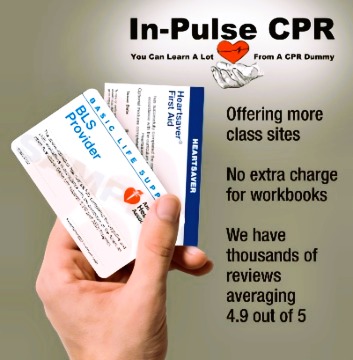CPR in Babies
Introduction
There are some subtle differences in performing CPR in babies compared to adults and older children. Babies are not only smaller in size but are also fragile- CPR done inappropriately can cause damage to many internal organs in children less than 1 year of age. But it is important to know how to perform CPR in babies as it can save a life.
Causes of arrest in Babies
When CPR is done properly it can help deliver oxygen to the brain and other organs until trained emergency personnel arrive or the baby recovers.
In general, babies have varied causes for cardiac arrest but the majority of cases are due to an illness or a major injury. Very rare is cardiac arrest in a baby from underlying congenital heart disease.
It is important for everyone that while one can obtain the basics of CPR in babies from reading an online course, there is no substitute for a real hands CPR training course. The basic CPR skills in babies are simple and can be easily learned in several hours.
Offering CPR to a baby
First, check if the baby is responsive to touch or voice. You also need to check if the baby is breathing or only gasping. You need to initiate CPR if the baby is not:
- Breathing or is gasping
- Moving or appears lifeless
- Responding to touch
- Wake up
- Alert
Initiating CPR
- If you are alone and have a smartphone, initiate CPR while calling 911 but use the speaker to communicate at the same time
- Do not leave the baby to make the call.
- After 2 mins of CPR (roughly 5 cycles), search for an AED
- If you are alone and do not have a smartphone, start CPR for 2 minutes and then call 911 from a landline and see if you can find an AED
- If you have someone else with you, ask that person to call 911 stat and get an automated external defibrillator ASAP while you initiate CPR
Chest Compressions
- Place the infant on a firm flat surface
- Avoid too much time looking for a pulse in a baby
- Place two fingers on the middle of the breastbone, just below the nipple line
- Perform 30 quick chest compressions. Each time push fast and hard enough to move the baby’s chest about 3-4 cm. Count loud with every chest compression
- Try to deliver about 100-120 chest compressions every minute.
- In between each compression, allow the baby’s chest to revert back to its original position- this will help ensure blood flowing to the baby’s brain and other organs
Rescue Breathing
- First, you need to open the airway: Place the palm of your left hand on the baby’s forehead. Then place two fingers of the right hand, on the chin and gently tilt the head back- this should open the airway.
- Place your mouth over the baby’s mouth and nose, forming a tight seal. Give two breaths. Each breath should be enough to cause the baby’s chest to rise. The breath should not be more than 1 second.
- The chest should rise. Remove your mouth and watch the chest fall.
- If the baby’s chest does not rise, quickly reposition the forehead and form a tight seal and perform rescue breathing
- Give cycles of 30 chest compressions and 2 breaths during the two-minute cycle.
- Continue until EMS arrives or until the baby starts to breathe again.
- Two minutes of CPR will permit you to perform 5 cycles of 30 chest compressions with two rescue breaths.
- While 2 minutes of CPR may not sound long, it is quite tiring. Therefore, if you are not alone, you should switch as a performer every 2 minutes.
Recovery position
If the baby starts to breathe on his or her own, there is a chance that it may vomit and this can make breathing difficult. Hence, it is important to place all babies in a recovery position. The chin should be slightly angled from the chest and the face should rest on a flat surface. You have to make sure that nothing is covering or blocking the baby’s nose or mouth. By placing the baby in the recovery position, this will allow for the airway to remain open.




